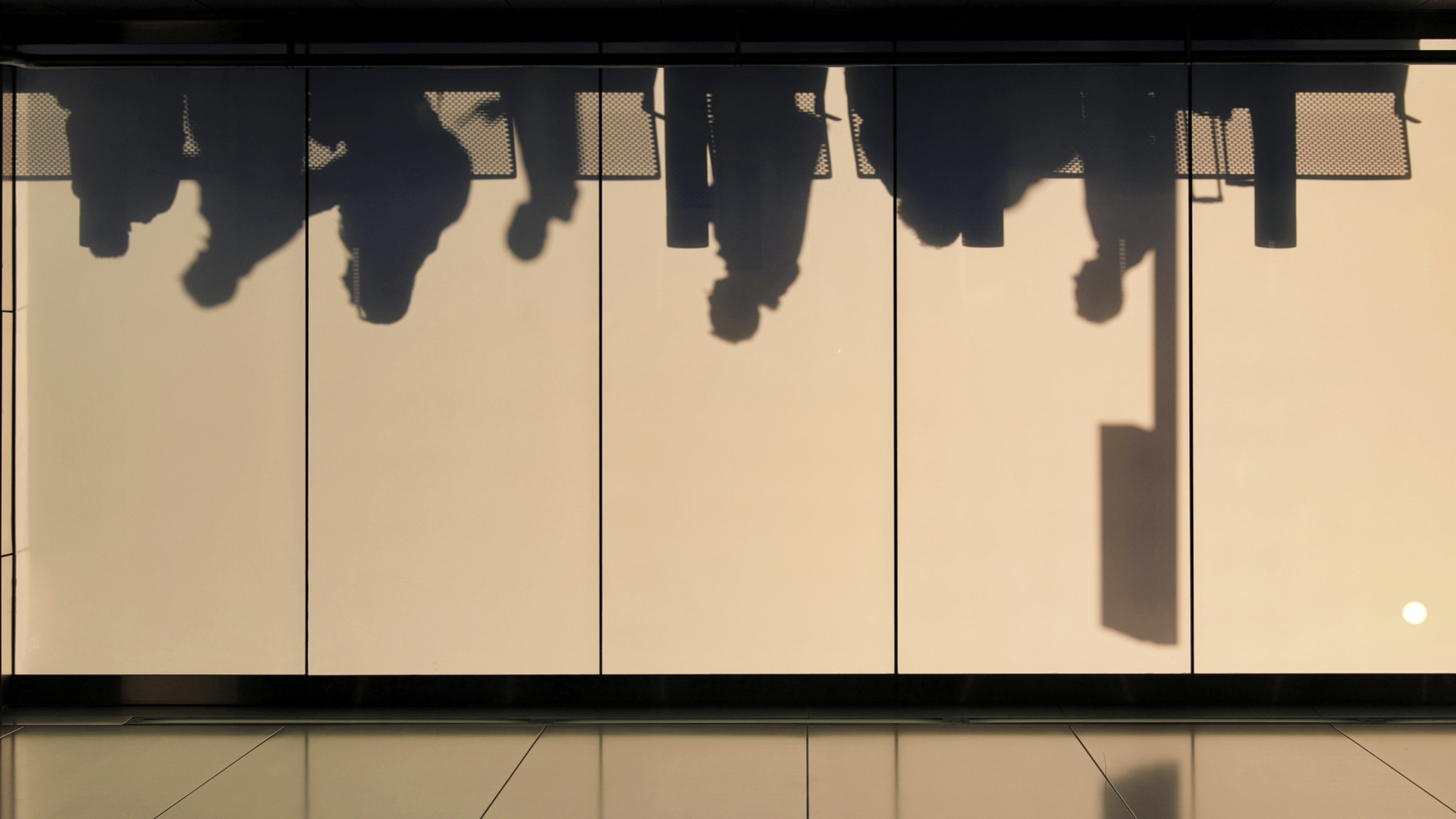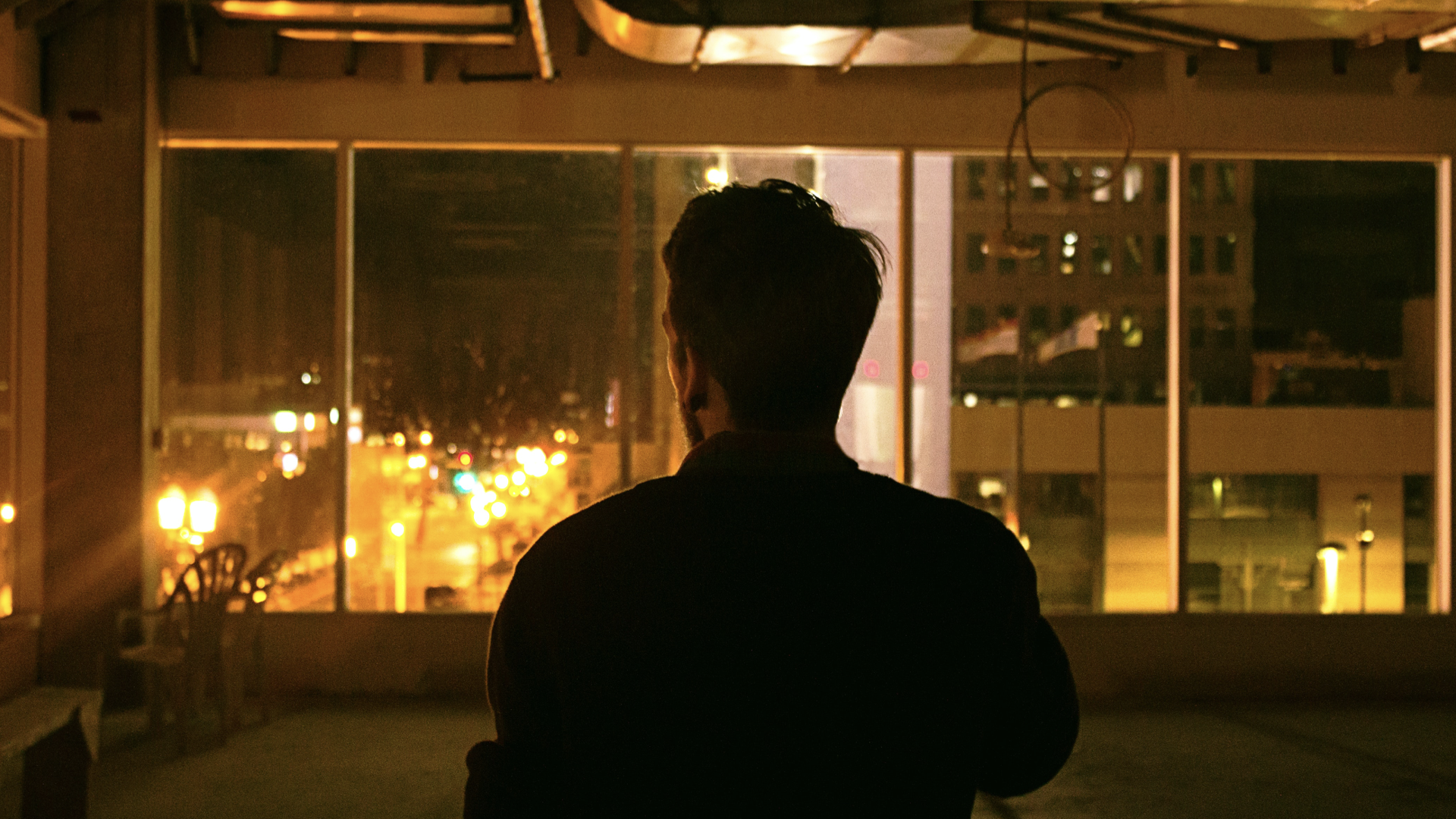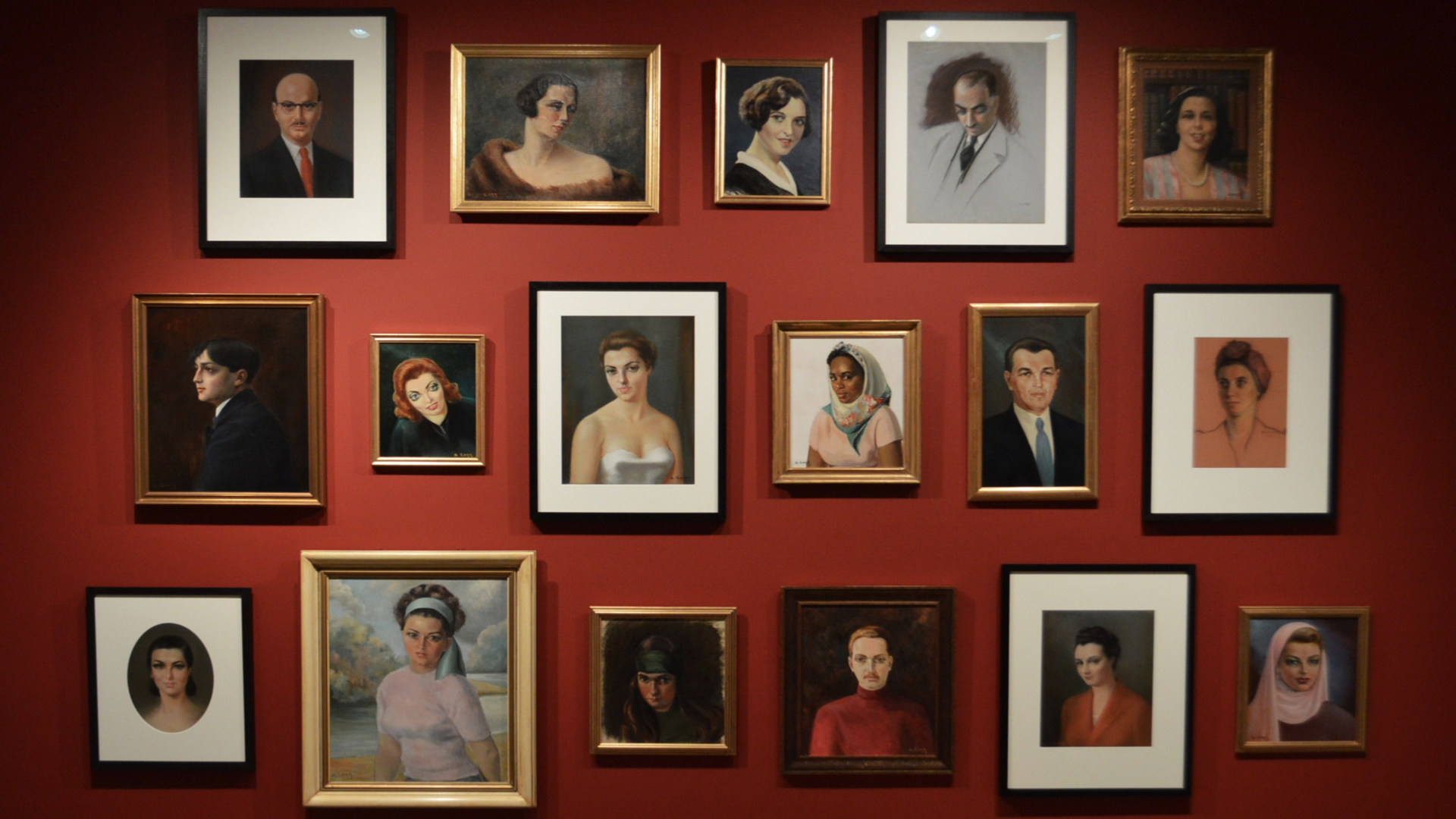Across the United States, people have fewer close friends than they did three decades ago, and they’re less likely to have a best friend. This is according to new research from the American Enterprise Institute suggesting that “the role of friends in American social life is experiencing a pronounced decline.” The data comes as experts continue to talk of a broader “loneliness epidemic” in the country—one that worsened during the pandemic and has implications for the future of U.S. democracy. How are social isolation and loneliness affecting contemporary American life?
Daniel Cox is the senior fellow in polling and public opinion at AEI, and the author of the recent friendship study. As Cox sees it, social isolation is a downside of continuing remote work and a reason some Americans still aren’t getting vaccinated. Though he’s skeptical that this isolation is the major driver of violent extremism or conspiracy theories in today’s politics, he notes that isolated Americans are less committed to upholding civil society and its political, cultural, and social institutions. Cox says fighting social isolation could theoretically unite the U.S., as could battling the related problem of the opioid epidemic, but the issue doesn’t generate as much political or media attention as more polarizing national concerns.
Graham Vyse: Social isolation and loneliness are old themes in America. What’s happening now that’s new?
Daniel Cox: Despite the fact that there’s been a lot of focus, and scholarly attention, on social isolation and loneliness, there’s a lot we don’t know. We know prolonged periods of social isolation are really bad for your mental and physical health, but when it comes to other critical questions—the effect of having only one close friend, whether single people are better able to hang onto friendships than married people—there’s still a lot we don’t know, and a lot of it’s changing.
In our study, we found a pretty steep decline in the number of close friends people reported having and the number of people who had a best friend. We also found that people are less likely to rely on friends than they did in the past. This is happening as people are marrying later, starting families later or not at all, and probably need more support from friends than ever before.
In 1990, a Gallup survey found that 55 percent of men had at least six people they considered a close friend. Our poll, conducted in 2021, found that just 27 percent of men had six or more close friends. Women saw a decline, too, but not to the same extent. In 2021, 15 percent of men reported no close friends, compared to only 3 percent in 1990.

In 1990, 69 percent of Americans said they had a best friend. Today 55 percent report having a best friend. We’re also less likely to rely on friends when we have personal problems. One of the groups in which we’re seeing some of the most change there is young men, nearly half of whom went to a friend first in 1990. Today they’re more likely to go to a parent than to a friend.
A lot of it has to do with living situations. We’re seeing record-breaking numbers of young people living at home with their parents, and young men are more likely to live at home than young women.
In a different study we conducted last year, we asked people to give the name, first name, or initial of up to seven people with whom they’ve discussed an important personal matter in the previous six months. This replicated a study done in 2013. The number of Americans who said that they had no one in their core social network doubled from 8 percent in 2013 to 17 percent in 2020. We’re seeing a really significant decline in people’s social capital—the relationships they can rely on when they’re in trouble.
Vyse: What explains these social trends?
Cox: There are a number of things happening. One question I’ve focused on is why men seem disproportionately affected. There are a couple of explanations here: First, women invest more time than men in their friendships. Married women are much more likely than married men to say the first person they’d go to if they had a personal problem is a friend. Married men, nearly exclusively, rely on their wives. Women have a broader social network than men to rely on.
From an early age, women are socialized to be more nurturing and relationship-oriented than men, while men are taught to perceive that intimacy with other men is sort of effeminate or weak. But if you look at the people most likely to be suffering this steep friendship decline, it’s young men, who are least likely to embrace traditional notions of masculinity. The problem can’t simply be older, conventional approaches to masculinity.
We asked questions such as “How often do you tell your friend that you love them?” and “Do you get emotional support from your friend?” and “Do you feel comfortable talking to your friend about personal problems?” Women score higher on all those. They’re far more likely than men to engage in that kind of stuff with their friends. When you look at social outcomes such as anxiety, depression, and loneliness, people who don’t have intimate connections with their friends are far more likely to experience those things.
There are conservative and liberal arguments for why this is happening. Conservatives argue that modern culture has feminized men in ways that make it difficult for them to get together and engage in traditionally masculine activities—that there are fewer all-male spaces. I don’t find this argument terribly convincing, though there might be a kernel of truth to it. The liberal argument is that toxic masculinity and homophobia are the roots of the problem—that men are socialized to avoid showing affection, particularly to other men, which stops them from forming more intimate connections with their male friends. There’s something to that story, but it’s not the entire story.
It’s true that, from an early age, women are socialized to be more nurturing and relationship-oriented than men, while men are taught to perceive that intimacy with other men is sort of effeminate or weak. But if you look at the people most likely to be suffering this steep friendship decline, it’s young men, who are least likely to embrace traditional notions of masculinity. The problem can’t simply be older, conventional approaches to masculinity.

We know that we’re less involved in religious communities than we used to be. Young men are among the most likely to be uninvolved. Religious communities were, historically, a tremendously important social outlet. We know that both young men and young women are marrying later than they used to. The average age for first marriages for young men is about 30. For young women, it’s about 28. Despite the fact that marriage and friendship are often set up in opposition to one another, married people tend to have larger social circles than single people.
Finally, we found that the workplace is the most common way that Americans make close friends. Men—young men, in particular—were most likely to have exited the workforce over the last two decades. A lot of workers are excited about remote work and flexible schedules, but there’s a real danger that we won’t make allowances for the social benefits many workplaces offer.
Vyse: Do you think some of the changes that may be taking place in American workplaces now, including the continuation of remote work following the pandemic year, could exacerbate these negative social trends?
Cox: It already has. It was pretty tough socially for young people who joined companies during the pandemic. Many moved from school to a new city or a new neighborhood—where they didn’t know a lot of people and there weren’t a lot of social activities available to them—and then they couldn’t interact with their colleagues except through a computer screen.
We know that both young men and young women are marrying later than they used to. The average age for first marriages for young men is about 30. For young women, it’s about 28. Despite the fact that marriage and friendship are often set up in opposition to one another, married people tend to have larger social circles than single people.
Vyse: Thinking of the pandemic, how are these social trends shaping the vaccine rollout?
Cox: I look at this in a couple of ways. Among both Democrats and Republicans, if most of your social circle was vaccinated, you had a really high likelihood of being vaccinated yourself. You were much more likely to be encouraged to get a vaccine. So much social and civic behavior, and political engagement, is just about being asked. If you’re asked by a friend, a family member, or a neighbor to show up to a park cleanup, or to participate in a political rally, you’re much more likely to go. Those kinds of connections are crucial for large-scale public-health issues as well. Knowing that people who are socially disconnected are least likely to get a vaccine should really change our thinking.
Vyse: How should it change our thinking?
Cox: We’re so ready to write people off and say they’re not reachable. After the 2020 election, I wrote that Democrats and Republicans should be arguing more, not less—that we should engage with each other more.
Vyse: What’s the history of insight into social isolation in America? You have sociological texts like The Lonely Crowd by David Riesman, Nathan Glazer, and Reuel Denney. There’s the work of the political scientist Robert Putnam, author of Bowling Alone. What other background is important for understanding what you’re looking at today?

Cox: There’s a huge literature on social capital. The work of Putnam really focused on civic associations, including bowling leagues, and he documented a substantial collapse of these groups. With the advent of social media, a lot of focus has gone into understanding the consequences of people spending so much energy connecting with others online and not in person. There are those who argue that technology has been a huge problem, particularly for young people spending so much time online, developing superficial relationships.
Vyse: Are there ways these issues of social isolation are under-scrutinized? Are we missing things about our current moment from failures of observation?
Cox: Absolutely. It’s amazing, given how friendship is such a fundamental part of human existence, that we would invest so few resources in understanding it. It’s kind of mind-blowing to me. In another recent survey, we asked about a list of things—making money, being married, having kids or a prestigious job. Having good friends was the thing people most often mentioned as essential for living a fulfilling life.
But then we don’t put in the time. If you look at the American Time Use Survey, we top out at spending time with friends at age 18. That’s the age when we spend the most time cultivating and maintaining friendships. After that, it’s downward for 10 to 15 years. Then it’s less than any other relationship we have for the most part.
The workplace is the most common way that Americans make close friends. Men—young men, in particular—were most likely to have exited the workforce over the last two decades. A lot of workers are excited about remote work and flexible schedules, but there’s a real danger that we won’t make allowances for the social benefits many workplaces offer.
Vyse: How might these social trends be affecting democracy in America?
Cox: It’s a really interesting question. I hear it said that people who are socially isolated are more likely to be radicalized, to be willing to try overthrowing the government, or to engage in really provocative political acts. I don’t see that in the data we have. We’ve done studies on conspiracy theories and misinformation, looking at a variety of different political views, and it’s people stuck in politically homogeneous social circles who are most likely to embrace political extremism and conspiracies.
At the same time, we know people who are socially isolated have lower levels of interpersonal trust. They’re less confident in the social, civic, and political institutions we have. They’re not invested in maintaining our democracy and civil society.
Vyse: What does the state of friendship across the political divide reveal about America today?
Cox: Americans are increasingly segregated by politics. We continue to be segregated by race, ethnicity, and religion, but one of the areas where we used to have pretty good engagement was on politics, whether at church or in civic associations. Those places allowed us to engage with people whose views were different from our own. But with social media and online dating, we’ve seen politics become an important element of social identity, and we’ve gotten pretty good a self-sorting, so now a majority of Democrats and Republicans have no one in their immediate social network who’s a member of the opposite party. That presents a huge problem.
Vyse: How?

Cox: It means we’re much more likely to caricature the other side and not understand their perspective or motivations. It reduces our ability to compromise, because we now view the other side as the enemy. A majority of Democrats and Republicans now see the other side as a threat to the country. It’s truer of Republicans than of Democrats, but the tendency has increased on both sides over the past few years. We can’t operate in a healthy way if that’s our perspective. It’s an incredibly toxic way to operate, but it’s how we’re operating now.
Vyse: A defense of this kind of social behavior by left-leaning Americans might go something like this: “The Republican Party has coalesced behind a historically odious, illiberal figure in Donald Trump. Why should we be friends with people who enable him?” Is there any way in which Trump supporters have earned some of the social consequences they face from Trump opponents?
Cox: It’s a common and valid perspective. In studies we’ve conducted, we’ve asked, “Why wouldn’t you date someone who voted for Trump? Why couldn’t you be friends with someone who supported a different political candidate than you did?” A lot of what we’ve heard is that it’s not about politics, it’s about values—that Trump represented something different in terms of his character and how he treated people. There’s something to that. But it’s also sort of self-defeating if our goal is to live together in this country. We have to be able to find some common ground.
So much social and civic behavior, and political engagement, is just about being asked. If you’re asked by a friend, a family member, or a neighbor to show up to a park cleanup, or to participate in a political rally, you’re much more likely to go. Those kinds of connections are crucial for large-scale public-health issues as well.
Vyse: Have the political parties picked up on the trends you’re seeing in social isolation and loneliness in America?
Cox: Republicans identified, in Trump voters, a group that was really distrustful of the political system. Trump was bringing in voters who were less ideological in some ways and weren’t super-enamored of the Republican Party. They were irregular voters. What happens to them moving forward? Do they become so disillusioned that they stay home? Do they look for alternative political activity to engage in—maybe even violent political activity? It remains to be seen. But that’s a group that wields a lot of political clout.
Vyse: Is the Democratic Party or American liberalism interacting with these social trends in any meaningful way?
Cox: To the extent you see economic populism rearing its head on the left, the bet is on getting those kinds of disaffected, more marginalized voters increasingly engaged.
Vyse: How does the contraction of our social circles affect those who remain in them?
Cox: As our social circles contract, we’re forced to rely on a smaller group of people to meet our emotional and social needs. We put greater pressure on these folks, because what we need from our relationships hasn’t really changed—understanding, affection, support. It’s also a collective-action problem we can’t solve by ourselves. If I put more effort into my friendships and my friends don’t reciprocate, for example, I’m sort of stuck. That’s why we need to think about structural changes to foster friendships.
Vyse: What kind of structural changes?
Cox: There are models of ways schools can operate, for example, that encourage parents to socialize. It can be as simple as changing how they drop off their kids—having parents go into the building as opposed to sitting in their cars. With our own daycare, we used to talk to other parents a lot more before the pandemic, because everyone would be going into the building. Now we just sit outside, masked and socially distant in a parking lot. So there are ways to think about this. Some people already are thinking about it, but not at scale.

